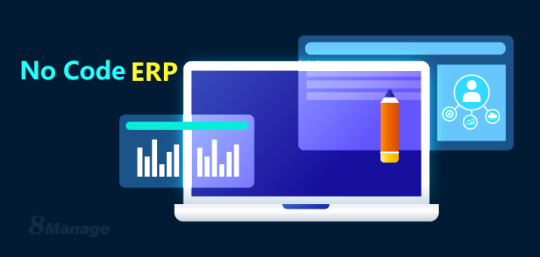#ERP projects
Explore tagged Tumblr posts
Text

Learn the best practices for mastering ERP projects, focusing on effective management, resource optimization, risk mitigation, and successful project delivery. For more details: https://blogs.prominder360.com/mastering-erp-projects-best-practices-management/
0 notes
Text









We would like to give our great thanks to one of our reliable workhorses inside Project Odin for this analysis of the PCU and ultimately its consequences for RP on Argent Dawn.
Big Billy is a well known, one could say antique player from Argent Dawn's oldest times. We appreciate his input greatly as someone who has been around for even longer than we have has perspective that players today simply do not have on how things have changed.
It is support of him and others, like yourselves good readers, who have kept this place afloat over the years.
#confessions of argent dawn#pcu#argent dawn eu#perroy#hypocrisy#harassment#erp#the rotgarde#bullying#project odin
7 notes
·
View notes
Text
How ERP Systems Enhance Business Process Management?
3 notes
·
View notes
Text
Unlocking the Mysteries of Southeast Asian Art in Times of War: You Won’t Believe What These Artists Revealed!
by Embassy Row Project

In the midst of tumultuous battles and whispered conflicts, a remarkable story unfolds across the canvas of Southeast Asia. “The Quiet History of Southeast Asian Warfare and Conflict Zone Art” invites you to embark on an extraordinary journey through the heart and soul of a region steeped in history and strife. This captivating exploration weaves together narratives of ancient battles, artistic resistance, and modern protests, revealing how art has both reflected and shaped the course of Southeast Asian history.
What You’ll Learn:
-Carved in Stone: Unearth the ancient narratives etched into the walls of Angkor Wat and Borobudur, unveiling the roots of Southeast Asian conflict.
-Dissent in Brush Strokes: Dive into the role of art as a powerful tool in anti-colonial movements, where every brushstroke became a cry for freedom.
-Revolution on Canvas: Discover the Hanoi School of Art and its impact on the tumultuous Indochina Wars, where artists became warriors of expression.
-Images of Resistance: Explore the propaganda art of North Vietnam, witnessing how visuals were wielded as weapons.
-Sketches from the Frontlines: Witness the emergence of combat art, as artists ventured into the heart of conflict zones to capture the raw essence of war.
-The Art of Dissent: Delve into Thailand’s socially conscious creative movement, where artists challenged the status quo with their provocative works.
-Visual Resistance: Follow Carlos Francisco’s artistic rebellion during Martial Law in the Philippines, where his art spoke louder than words.
-Survival and Remembrance: Experience the profound impact of Vann Nath’s art in the aftermath of the Khmer Rouge’s brutality.
-Hidden in Plain Sight: Uncover the allegories of power and suppression in Burmese contemporary art, where hidden messages challenge oppression.
-After the Blast: Gain insight into Balinese artistic responses to the 2002 bombings, showcasing how art heals wounds and sparks resilience.
“The Quiet History of Southeast Asian Warfare and Conflict Zone Art” is a compelling narrative that illuminates the silent warriors of the region, artists who courageously etched their voices into history. This book is a testament to the enduring power of art to reflect, resist, and reshape the world in times of turmoil. Prepare to be captivated, inspired, and moved as you journey through these pages, for you are about to discover a hidden history that has long been overlooked, yet resonates loudly in the heart of Southeast Asia. Embrace this powerful odyssey through art, conflict, and the enduring human spirit.
Read more at https://medium.com/@artifaktgallery/the-quiet-history-of-southeast-asian-warfare-and-conflict-zone-art-6ffb4306beeb
#ERP#Embassy Row Project#Artifakt Gallery#Southeast Asia War Gallery#Southeast Asian Warfare#Southeast Asian Warfare Timeline
2 notes
·
View notes
Text
Posting singing tomorrow!!
#making a post about it so that I can hold myself accountable and ensure that I don't back out#music is GOOD for you creative projects are GOOD for you#(also the point is to actively have people listen to this one and not just send it to a few people with no response so...)#(yay erp 🎉)#The Horrors™ (<-being artistically perceived i.e. the most vulnerable I could possibly be)#mel's complicated relationship with art
3 notes
·
View notes
Text
Odoo ERP for Construction Industry
🚧 Transform Your Construction Business with Odoo ERP 🏗️
Tired of juggling spreadsheets, delays, and miscommunication on-site?
🔧 Odoo ERP for the Construction Industry is your all-in-one solution — from project planning and budgeting to real-time site tracking, procurement, HR, and more.
✅ Centralized project management
✅ Real-time inventory & procurement control
✅ Streamlined HR, payroll & equipment tracking
✅ Accurate cost estimation & billing
📈 Build smarter, faster, and more efficiently — all in one platform.
👉 Discover how Odoo ERP can power your construction business: https://www.candidroot.com/odoo-construction-management-system
#Odoo #OdooERP #ConstructionTech #DigitalConstruction #ProjectManagement #ERPforConstruction #ConstructionBusiness #OdooForConstruction
#odoo#odoo erp#construction tech#digital construction#project management#erp for construction#odoo for construction#construction business#erpsoftware#odoo erp software#erp system
0 notes
Text
ERP Implementation Success: Key Steps for a Smooth Transition
Embarking on an ERP Implementation Success journey is both exciting and challenging for any organization. To achieve ERP Implementation Success, businesses must follow key steps, anticipate potential challenges, and apply effective strategies. From planning and vendor selection to data migration and training, this article explores the essential aspects of ERP implementation to ensure a smooth and…
#Business Efficiency#Business Transformation#change management#Data Migration#Digital Transformation#Enterprise Software#ERP Best Practices#ERP Challenges#ERP Implementation#ERP Success#Process Optimization#Project Management#System Integration#User Training#Vendor Selection
0 notes
Text
Netsuite Project Recovery
NetSuite Project Recovery Solutions: Get Back on Track
Struggling with a failing NetSuite implementation? Our NetSuite project recovery services help businesses regain control, optimize configurations, and ensure seamless functionality. From NetSuite troubleshooting to workflow automation fixes, we provide tailored strategies for success. Contact us to revamp your ERP efficiency today!
For more details click : Netsuite Project Recovery

#NetSuite project recovery services#NetSuite troubleshooting#ERP efficiency#workflow automation fixes
0 notes
Text
Why Your Business Needs a Fully Integrated ERP System

In today’s competitive business environment, companies require efficient management of resources, operations, and workflows. A fully integrated ERP system is essential for businesses seeking seamless automation, improved productivity, and streamlined operations. Without a unified system, companies often struggle with inefficiencies, data silos, and errors that can hinder growth. This article explores why businesses should invest in a fully integrated ERP system and how it supports long-term success.
What is a Fully Integrated ERP System?
A fully integrated ERP (Enterprise Resource Planning) system is an all-in-one solution that connects various business processes, including finance, human resources, inventory, procurement, and project management, into a centralized platform. Unlike standalone software solutions that operate independently, an integrated ERP system allows real-time data sharing across departments, improving decision-making and operational efficiency.
Benefits of a Fully Integrated ERP System
1. Enhanced Productivity and Efficiency
With a fully integrated ERP system, businesses can automate routine tasks, reduce manual data entry, and eliminate redundant processes. This leads to improved efficiency and allows employees to focus on core business activities rather than administrative tasks. Companies using the Best ERP software for businesses in Mumbai can optimize operations, ensuring a more streamlined workflow across all departments.
2. Improved Data Accuracy
A fully integrated ERP system ensures data consistency across different departments, reducing the risk of discrepancies and errors. With real-time access to accurate business insights, managers can make data-driven decisions that contribute to strategic growth. Businesses leveraging Fully integrated ERP consulting for business growth in Mumbai can improve forecasting, budgeting, and overall decision-making.
3. Seamless Project Management
Project-based businesses require effective resource allocation, budget tracking, and timeline management. ERP systems for project management in India provide comprehensive tools to monitor project progress, assign resources efficiently, and ensure project deadlines are met. By integrating all project-related data within a single platform, companies can enhance collaboration and minimize project delays.
4. Cost Savings and ROI Improvement
Implementing a fully integrated ERP system can reduce operational costs by automating processes and eliminating inefficiencies. Businesses can also save money by avoiding costly errors, redundant software applications, and unnecessary labor expenses. Over time, companies that invest in ERP implementation service across India experience a significant return on investment (ROI) through better resource utilization and cost control.
5. Scalability and Business Growth Support
As businesses expand, managing multiple processes and systems becomes more complex. A fully integrated ERP system scales with business growth, accommodating increased data volumes, transactions, and new business functions without requiring a complete system overhaul. This flexibility ensures that businesses can sustain long-term expansion without technological barriers.
Conclusion
A fully integrated ERP system is no longer a luxury but a necessity for businesses looking to optimize efficiency, enhance decision-making, and drive sustainable growth. Whether managing finances, projects, or inventory, companies that adopt ERP implementation service across India will gain a competitive edge in today’s digital landscape. Investing in a unified ERP solution is a strategic move that ensures long-term business success and operational excellence.
0 notes
Text
#ERP project management#erp systems for operational efficiency across india#erp software development for businesses in mumbai
0 notes
Text

Boost Project Effectiveness with Odoo's Scrum Features With Odoo ERP, Scrum teams can track projects and tasks more effectively, boosting overall productivity. The platform’s visual boards, such as the Kanban view, help teams see which tasks are pending, in progress, or completed. The sprint release and backlog management tools ensure that teams stay on schedule and meet their deadlines. Odoo also offers detailed reporting to monitor progress, track efficiency, and pinpoint any bottlenecks in the project lifecycle.
0 notes
Text
Why Are Small and Medium-Sized Enterprises (SMEs) Better Suited for No-Code ERP? Three Key Reasons
As the business environment evolves rapidly and technology advances, the need for efficient management tools is becoming increasingly critical. For small and medium-sized enterprises (SMEs), selecting the right ERP system is crucial. Among the available options, no-code ERP systems are gaining popularity due to their unique advantages. So, why are SMEs better suited for no-code ERP systems? This article delves into three core reasons.

1.Cost-Effectiveness: The Ideal Choice for Resource-Limited Businesses
SMEs often face constraints in both funding and human resources. Traditional ERP systems, with their high costs and complex deployment processes, can be overwhelming for these businesses.
1.Low Initial Costs
No-code ERP systems eliminate the need for expensive development and specialized technical teams. Companies can configure the system with ease, significantly reducing initial investment. For instance, certain solutions offer integrated management functions, enabling quick deployment without requiring a substantial budget.
2.Reduced Maintenance Expenses
Traditional ERP systems demand regular updates and professional team support. In contrast, no-code ERP systems feature simplified interfaces and automation that drastically lower maintenance costs. Employees can operate the system after brief training, minimizing reliance on external support.
3.Quick Implementation
The rapid deployment capabilities of no-code ERP systems allow businesses to integrate the system within a short period. This is especially beneficial for SMEs needing to respond swiftly to market changes. The modular design of some systems enables efficient operation with minimal technical barriers.
2.Flexibility and Scalability: Meeting Personalized Business Needs
As SMEs grow, their business requirements frequently change. Therefore, flexibility and scalability are critical considerations when selecting an ERP system.
1.Effortless Customization of Business Processes
No-code ERP systems allow businesses to customize processes through drag-and-drop components and simple configurations. This integrated management approach helps companies adapt to market changes and streamline internal workflows. For example, businesses can tailor modules for procurement, finance, or project management, greatly enhancing system adaptability.
2.Modular Expansion
As businesses grow, their operational demands increase. No-code ERP systems enable companies to add modules, such as project ERP systems, human resource management, or inventory management, as needed, avoiding unnecessary system redundancy. Certain solutions offer highly integrated modular features, supporting business expansion across different growth stages.
3.Strong Compatibility
No-code ERP systems typically support seamless integration with other tools or platforms, such as CRM systems or financial software. This compatibility helps SMEs establish an efficient digital ecosystem. Some systems can integrate with widely used tools, improving collaborative efficiency.
3.Lowering the Technical Barrier: Empowering Non-Technical Staff
For many SMEs, the lack of a dedicated IT team is a significant challenge. No-code ERP systems are designed to address this issue.
1.No Technical Expertise Required
A major advantage of no-code ERP systems is their simple and intuitive user interface. Employees can operate the system after brief training without needing to learn complex programming languages. Some solutions feature user-friendly interfaces, allowing employees to get started quickly and focus on practical application.
2.Fast Iterations and Adjustments
Traditional ERP systems often require developer involvement for any functional changes. In contrast, no-code ERP systems allow in-house staff to modify configurations in real time, swiftly responding to business needs. Certain solutions support flexible adjustments, enabling businesses to maintain efficiency amid changes.
3.Reduced Dependence on External Technology
No-code ERP systems minimize reliance on external technical services. Once the system is running smoothly, businesses can focus more on core operations and growth.

How Do No-Code ERP Systems Enable SMEs to Achieve Integrated Management?
No-code ERP systems not only address the high costs and complexity of traditional ERP systems but also facilitate integrated business management. By consolidating multiple business modules into one system, no-code ERP enhances data transparency and visualization, optimizes resource allocation, and improves operational efficiency.
For instance, a small manufacturing company can use a no-code ERP system to manage procurement, inventory, production, and sales without switching between multiple systems. Centralized data management allows businesses to analyze market demand accurately and optimize production planning. Some solutions enable comprehensive integration from finance to project management, significantly boosting efficiency.
Frequently Asked Questions (FAQs)
1.What Is a No-Code ERP System?
A no-code ERP system is an enterprise resource planning system that requires no programming knowledge for configuration and operation. Through an intuitive interface and simple configuration tools, it allows businesses to quickly set up workflows, making it ideal for SMEs that need rapid deployment and adjustments.
2.What Is the Difference Between Project ERP Systems and No-Code ERP Systems?
Project ERP systems focus on project management, typically tracking project progress, costs, and resource allocation. No-code ERP systems, on the other hand, are more versatile platforms that integrate multiple modules, including finance, HR, and inventory, in addition to project management. Some solutions cater to both project-specific and broader business needs through integrated functionality.
3.How Can SMEs Choose the Right No-Code ERP System?
When selecting a no-code ERP system, SMEs should consider the following factors:
● The system’s ease of use and learning curve for employees.
● Support for modular expansion to accommodate future business growth.
● The service quality and technical support provided by the system’s vendor. Some solutions are well-regarded for offering comprehensive support services.
Through the above analysis and answers, it is evident that no-code ERP systems, with their cost-effectiveness, flexibility, and ease of use, are highly suitable for SMEs. For SMEs aiming for digital transformation, choosing a no-code ERP system is a significant step toward success.
0 notes
Text
Benefits of Implementing ERP Software for Engineering Firms

The engineering industry is one of the biggest industries in the world, and it plays an important role in growing the economy as well. The engineering sector is growing day by day and is highly competitive. Hence, efficiency, accuracy, and streamlined operations are crucial for success in this sector. Businesses face several challenges in this sector, like the complexities of a project, resource management, and deadline restrictions. ERP software for engineering firms is the best way to overcome all of these challenges as it integrates and automates business processes.
Here is the list of top benefits of utilizing ERP systems for the engineering industry:
1. Project Management:
The projects in engineering sectors have a detailed documentation process, different teams, and complicated workflows. ERP system for engineering firms help in various ways, like centralizing project data, enabling limitless collaboration, and getting real-time updates. Because of this software, every team member has all the updates, which in turn reduces miscommunication and delays in the project.
2. Resource Management:
For all engineering projects, it is essential to allocate all resources carefully, like equipment, materials, and labor. With the utilization of ERP software, the monitoring of resources can be performed easily. It helps in checking resource availability, optimizing usage, and forecasting requirements. This ultimately results in improving cost efficiency.
3. Quality Management:
Ensures engineering projects meet industry standards and regulations.
Quality Control: Offers tools for monitoring and managing the quality of materials, processes, and completed projects.
4. Data Management:
Using ERP software, engineering firms can make sure that they can get a unified database to eliminate data silos and ensure consistency through all departments. A centralized data management system is beneficial for decision-making as well it provides critical information when required.
5. Time and Budget Management:
When the whole system gets automated with ERP software, it reduces time and cost on repetitive tasks like data entry, procurement, and inventory management. The utilization of ERP systems in engineering firms helps in reducing manual errors and improving productivity. Hence, the firms can focus on other important things like innovation and project execution.
6. Client Relationship Management:
Most ERP systems include customer relationship management tools that are very helpful in managing client interactions. This tool allows the firm to track communication history, project milestones, and client preferences. Because of this feature, firms can improve customer satisfaction and build long-term relationships.
7. Scalability and Flexibility
ERP solutions may scale with the company as it grows, allowing for more projects, clients, and resources. Customization: ERP solutions can typically be tailored to an engineering firm’s specific demands and operations.
8. Financial Management
Accounting combines financial accounting with project management to provide a complete picture of the company’s financial health. Reporting: Creates detailed financial reports, such as profit and loss statements, balance sheets, and cash flow statements.
How PMTRACK ERP Helps:
Managing development processes, monitoring complex projects, and ensuring seamless collaboration across divisions are becoming increasingly important for company success. Engineering organizations in Pune, India, and around the world have distinct issues in successfully managing their operations.
Implementing a bespoke Enterprise Resource Planning (ERP) solution provides transformative benefits by streamlining processes, improving project management, and ultimately generating profitability.
For businesses considering ERP adoption, selecting the correct ERP software vendor is critical. PMTRACK ERP, a reputable ERP solution provider in Pune, India, specializes in engineering ERP systems tailored to the demands of engineering and manufacturing companies.
ERP software is used to connect project management with financial accounting, inventory control, and procurement procedures. This integration gives project managers real-time information about project costs, resource availability, and schedules, resulting in better-informed decisions and more effective project execution.
Engineering firms that use an ERP system can improve operational efficiency, reduce costs, improve project delivery, and ultimately boost client satisfaction and profitability.
Summary:
ERP software provides several advantages to engineering firms in Pune, India, ranging from better project management and financial control to higher client satisfaction and scalability. Engineering organizations can employ a comprehensive ERP solution to improve operations, decrease inefficiencies, and drive long-term growth.
PMTRACK ERP, one of the leading ERP solution providers in Pune, India, provides comprehensive, industry-specific ERP solutions that are suitable for engineering organizations’ unique requirements. Firms that collaborate with an experienced engineering ERP software company in India receive a trusted partner in negotiating the complexity of their business, setting them up for success in an increasingly competitive landscape.
#efficiency#accuracy#and streamlined operations are crucial for success in this sector. Businesses face several challenges in this sector#like the complexities of a project#resource management#Here is the list of top benefits of utilizing ERP systems for the engineering industry:#1. Project Management:#The projects in engineering sectors have a detailed documentation process#different teams#and complicated workflows. ERP system for engineering firms help in various ways#like centralizing project data#enabling limitless collaboration#and getting real-time updates. Because of this software#every team member has all the updates#which in turn reduces miscommunication and delays in the project.#2. Resource Management:#For all engineering projects#it is essential to allocate all resources carefully#like equipment#materials#and labor. With the utilization of ERP software#the monitoring of resources can be performed easily. It helps in checking resource availability#optimizing usage#and forecasting requirements. This ultimately results in improving cost efficiency.#3. Quality Management:#Ensures engineering projects meet industry standards and regulations.#processes#and completed projects.#4. Data Management:#Using ERP software
0 notes
Text
“Art of Resilience: Launching, Curating, and Promoting Conflict Zone and War-Themed Galleries and Exhibits” book is now available on Amazon
by Embassy Row Project

“Art of Resilience: Launching, Curating, and Promoting Conflict Zone and War-Themed Galleries and Exhibits” is a comprehensive guide to exploring, understanding, and showcasing the powerful art borne out of conflict zones and war. As an artist, gallery owner, or aspirant, this book is your definitive roadmap to creating a platform that encapsulates the courage, resilience, and stories of conflict-affected artists and their work, echoing their voices and experiences across the globe.
Key Takeaways
· Setting the Stage: Gain a comprehensive understanding of conflict zone and war art, delving into its history, impact, and relevance in the contemporary world.
· Discovering Emerging Talent: Learn strategies to identify and source emerging artists who harness their experiences to create compelling war-themed artwork.
· Crafting a Compelling Narrative: Understand the importance of story in promoting and explaining the art and its creators.
· Designing the Gallery Space: Learn to create immersive and thought-provoking experiences that engage viewers and provoke deep reflection.
· Collaborating with Cultural Institutions: Discover the benefits of partnerships with NGOs, activists, and cultural institutions for broader reach and impact.
· Incorporating Interactive Elements: Learn how to enhance your gallery with multidisciplinary elements to create a more engaging and memorable visitor experience.
· Building a Digital Presence: Understand how to leverage social media, websites, and online galleries to promote your art and reach a global audience.
· Balancing Artistic Expression and Political Sensitivity: Grasp the delicate art of showcasing politically sensitive themes while respecting artistic freedom.
· Ensuring Security: Learn how to guarantee the safety of artists, artworks, and visitors, particularly when handling sensitive or controversial exhibits.
· The Future of Conflict Zone and War Art: Explore trends, adapt to changing landscapes, and foster hope through the transformative power of art.
“Art of Resilience: Launching, Curating, and Promoting Conflict Zone and War-Themed Galleries and Exhibits” is more than a guide — it’s a manifesto for curators, artists, and gallery owners passionate about bringing the stories of war and conflict zones to the forefront through art. Through this insightful book, you’re not just building an art gallery or an exhibit — you are creating a haven for resilience, a platform for stories that need to be told, and a beacon of hope shining through the poignant narratives of conflict zone and war-themed art. Navigate the intricate paths of this profound artistic niche and make your mark in promoting resilience through art.
— — — — — — — — — — — — — — — — — — — — — — — — — — — — — — — — — — — — — — — — — — — — — — — — — -
Now Available on Amazon!
Kindle: https://www.amazon.com/Art-Resilience-Launching-Promoting-War-Themed-ebook/dp/B0CD5VTP43/ref=sr_1_6?crid=3QI1S79Q8R4BL&keywords=Art+business+must+haves&qid=1693407696&s=digital-text&sprefix=art+business+must+haves%2Cdigital-text%2C687&sr=1-6
— — — — — — — — — — — — — — — — — — — — — — — — — — — — — — — — — — — — — — — — — — — — — — — — — -
For more books, please visit James Scott on Amazon.
You may also visit Embassy Row Project.
#ERP#Embassy Row Project#James Scott#Art of Resilience#Conflict Zone Art#War Themed Exhibits#Art business must haves#Art business online writing#The business of art#Art business#Art gallery how to do it right#The artists way#Art journal courage#Art business workbook#Art business book#Art business planner#Business of art#Art business card holder
2 notes
·
View notes
Text
Maximizing Efficiency with Odoo Integration Malaysia: A Smart Solution for Businesses
In the modern business landscape, seamless integration of various operational tools is key to maximizing efficiency and ensuring smooth workflows. One such solution that has gained widespread attention in Malaysia is Odoo Integration Malaysia. This powerful ERP software integrates with various business functions, from finance and accounting to manufacturing and e-commerce. In this blog, we’ll explore how Odoo integration can benefit businesses in Malaysia, particularly in areas like manufacturing, invoicing, and regulatory compliance.
What is Odoo Integration Malaysia?
Odoo Integration Malaysia refers to the process of incorporating Odoo, a comprehensive enterprise resource planning (ERP) system, into a company’s existing software infrastructure. Odoo provides a suite of applications that allow businesses to automate and streamline processes such as inventory management, accounting, customer relationship management (CRM), and manufacturing.
The beauty of Odoo lies in its flexibility. It can be tailored to fit the specific needs of different industries, making it a go-to solution for businesses of all sizes. When integrated correctly, Odoo can ensure that data flows seamlessly across departments, reducing the need for manual intervention and improving overall productivity.
How Odoo Integration Enhances Manufacturing Software Malaysia
One of the key advantages of Manufacturing Software Malaysia is its ability to manage production processes efficiently. By integrating Odoo with manufacturing software, companies can automate many aspects of production management, such as inventory tracking, procurement, and scheduling. Odoo’s manufacturing module allows businesses to optimize their production workflows, reduce downtime, and minimize errors.
With Odoo’s integration, manufacturers can gain real-time insights into their operations, such as tracking raw materials, finished goods, and work orders. This enhanced visibility helps manufacturers make better decisions, plan production schedules more accurately, and ultimately improve their bottom line.
Integrating Malaysia E-Invoicing Solutions with Odoo
The shift toward digital invoicing is becoming increasingly important for businesses in Malaysia. Malaysia e-invoicing solutions enable companies to generate, send, and receive invoices electronically, ensuring compliance with local tax regulations. By integrating Odoo with Malaysia’s e-invoicing system, businesses can automate the invoicing process and ensure that invoices are submitted directly to the Inland Revenue Board (LHDN).
This integration streamlines the invoicing process, reduces errors, and eliminates the need for manual data entry. Additionally, real-time invoicing allows for quicker payment processing, improving cash flow for businesses. With Odoo, businesses can ensure that their invoicing is fully automated, accurate, and compliant with Malaysian regulations.
The Role of LHDN E-Invoice Vendor Malaysia in Odoo Integration
An LHDN e-invoice vendor Malaysia plays an essential role in ensuring that businesses meet the legal requirements for e-invoicing. These vendors offer software solutions that integrate seamlessly with business systems like Odoo. By working with a certified LHDN e-invoice vendor, businesses can automate the submission of e-invoices to LHDN, reducing the risk of human error and ensuring compliance with local tax laws.
The integration of Odoo with an LHDN e-invoice vendor simplifies the entire invoicing process, enabling businesses to generate and submit invoices with just a few clicks. This streamlined process saves time, reduces administrative costs, and improves tax reporting accuracy, allowing businesses to focus on growth rather than regulatory compliance.
Why Choose Odoo Integration Malaysia for Your Business?
Integrating Odoo with various business functions, including manufacturing and e-invoicing, offers numerous benefits for businesses in Malaysia. Odoo’s flexible and scalable solutions can be tailored to meet the specific needs of different industries. By automating workflows, businesses can increase efficiency, reduce errors, and make better data-driven decisions.
Moreover, integrating Odoo with Malaysia e-invoicing solutions ensures that businesses comply with tax regulations while improving invoicing efficiency. As the regulatory landscape continues to evolve, businesses must choose solutions that are both adaptable and reliable.
For businesses looking to take advantage of seamless e-invoicing integration, Peppol Sync offers reliable solutions that integrate directly with Odoo, ensuring smooth, compliant invoicing processes. By choosing the right integration partner, businesses can streamline their operations, reduce costs, and improve overall efficiency.
In conclusion, Odoo Integration Malaysia is a powerful tool for businesses seeking to optimize their operations. Whether it’s through improved manufacturing software, enhanced invoicing processes, or seamless integration with local tax systems, Odoo provides the flexibility and scalability businesses need to stay competitive. With the right integration strategy, businesses can unlock the full potential of their ERP system and drive growth for years to come.
#Odoo Integration Malaysia#Odoo Migration Malaysia#Open Source Erp Malaysia#Project Management Software Malaysia
0 notes
Text
ERP Systems: Driving Transportation Industries into the Future

The transportation industry, an ever-evolving sector, plays a critical role in a nation's economic development. As businesses strive to achieve efficiency, scalability, and seamless operations, ERP systems emerge as a game-changing solution. From project management in Mumbai to optimizing logistics in remote corners of India, ERP systems are redefining the way transportation companies operate, enabling them to meet modern-day challenges with precision.
What Are ERP Systems?
Enterprise Resource Planning (ERP) systems are integrated software solutions that help businesses manage and automate their core processes. These include accounting, inventory, human resources, project management, and more. ERP systems consolidate data into a unified platform, ensuring that all departments can collaborate effectively, make informed decisions, and drive efficiency.
The Role of ERP Systems in Transportation
The transportation industry involves multiple complex processes, including fleet management, route optimization, supply chain coordination, and compliance with regulations. ERP systems streamline these processes by providing real-time insights, automating repetitive tasks, and offering tools for advanced project management.
Here are key areas where ERP systems are transforming transportation:
Fleet Management
ERP systems enable real-time monitoring of vehicles, fuel usage, maintenance schedules, and driver performance. This ensures reduced downtime, lower operational costs, and improved service delivery.
Supply Chain Optimization
With ERP, transportation companies can streamline logistics, track shipments, and manage warehouses more effectively. The software offers real-time visibility into the supply chain, making it easier to handle disruptions and maintain customer satisfaction.
Regulatory Compliance
Transportation businesses in India face stringent compliance requirements. ERP systems automate record-keeping and ensure adherence to local and international regulations, minimizing legal risks.
Project Management
From planning routes to scheduling deliveries, ERP systems for project management in Mumbai and across India provide tools to execute transportation projects efficiently. These tools help companies stay on schedule and within budget while meeting customer demands.
ERP Systems for Project Management in Mumbai
Mumbai, India’s financial hub, is a bustling metropolis where transportation plays a pivotal role in business operations. With its dense population, heavy traffic, and dynamic business environment, effective project management is crucial for success. ERP systems address these challenges by:
Providing real-time data to track project progress.
Automating scheduling for vehicle dispatch and deliveries
Enhancing collaboration between different departments and external stakeholders.
For example, logistics companies in Mumbai can use ERP systems to plan optimal delivery routes, reduce fuel consumption, and improve turnaround times, ensuring timely delivery of goods despite the city's congestion.
ERP Systems for Project Management in India
Across India, the transportation industry faces unique challenges, from managing large fleets over vast geographical areas to dealing with unpredictable road conditions. ERP systems help businesses navigate these complexities by offering:
Scalable Solutions: Whether managing local deliveries or cross-country shipments, ERP systems adapt to the size and scope of operations.
Data-Driven Insights: By analyzing historical and real-time data, transportation companies can make strategic decisions to improve efficiency.
Integration Capabilities: ERP systems integrate with GPS, IoT devices, and other technologies, ensuring a seamless flow of information across the organization.
For instance, a logistics provider in rural India can use ERP systems to track vehicle locations, monitor fuel usage, and manage warehouse inventories, all from a centralized dashboard.
Future of ERP Systems in Transportation
The future of transportation lies in digitization and automation. ERP systems, with their ability to integrate emerging technologies like AI, blockchain, and IoT, are set to play a pivotal role in this transformation. For transportation companies, especially those focusing on project management in Mumbai and other parts of India, embracing ERP systems is no longer an option—it’s a necessity to stay competitive.
Conclusion
ERP systems have become the backbone of modern transportation businesses, driving efficiency, reducing costs, and ensuring superior customer service. Whether in Mumbai or across India, transportation companies leveraging ERP systems for project management are better equipped to face challenges, seize opportunities, and achieve sustainable growth.
As the transportation industry continues to evolve, ERP systems will remain a critical tool for businesses looking to navigate the complexities of the future.
0 notes